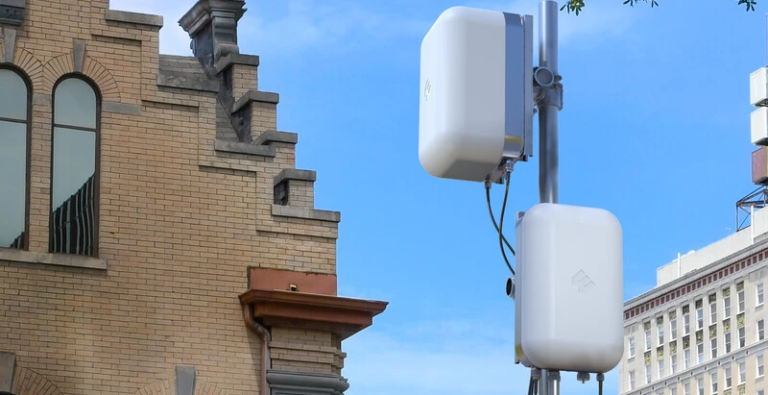How DAS Improves 5G Signal in Commercial Properties

In this article, we touch base on why many commercial properties require Distributed Cellular Antenna Systems or “DAS.” In very simple terms, the higher the signal capacity, the more it is prone to interference and competition. This means that without these DAS systems, cellular service will likely get worse, not better, in the foreseeable future.5G signal is still rolling out slowly since it started in 2022. Actual 5G, also known as C Band 5G, promises speeds up to 10GB/Second to your cell phone, router, factory equipment, cameras, and PCs. This technology will likely cause fiber optic and copper communication technology to become obsolete entirely.“Nationwide 5G” or low band 5G is the best signal that people get today. This 5G service is actually multiple LTE connections bonded together and is likely slower than fiber or actual 5G by a magnitude or two. Unfortunately, even when C Band 5G is actually implemented, it will create another round of new dead zones, weak signals, and interference in commercial buildings just as most people saw during regular updates from 1G all the way up to 4G and LTE.Email, phone, emergency notifications, and apps for CRM and ERP are increasingly delivered to employees on cell phones. With C Band 5G, we will start to see a rapid explosion of new Internet-of-Things (IoT) connections to the equipment in our building including robots, AV, and building automation systems, which drives down the cost of business and communication services that we use.With that said, you may be wondering why cellular signals degrade. Let’s discuss this further.
What Causes Weak Cellular Signals?
There are 4 main things that can hinder the strength of cellular reception:
● Heavy Cellular Traffic:
Crowded areas have a heavy toll on your cellular signal. When you are in a crowded area, all of the cell phones in the area fight for space on the nearest cell tower. When your cell phone is linked to a tower, it is very unlikely to experience a bad connection, but as more traffic fights for a spot, the signal gets weaker.
● Building Materials:
The building material in houses, cars, and businesses can also block the cellular signal. If you notice service fading in and out as you change locations, chances are that you are suffering from building material interference.
● The Distance Between You and The Cell Tower:
The further you are from a cell tower, the weaker signal you have.
● Weather:
Cellular technology works by sending and receiving radio waves. These waves can be directly affected by weather phenomena such as rain, wind, heavy clouds, snow, and more.
Using Cellular DAS to Improve the Cellular Signal in Your Business
Using cellular DAS can drastically improve the signal inside your premises. DAS stands for Distributed Antenna System and is used to supply cellular signal within large buildings or in areas with high interference.
How Does Cellular DAS work?
DAS and passive booster technology take the signal outside of your building, bring it inside your premises, and then redistribute the signal throughout the whole building. Having cellular antennas in your building will eliminate bandwidth caps and improve the signal inside your premises, allowing everyone to experience a high-quality cellular signal.
Types Of Cellular DAS
There are 2 main types of DAS systems
1. Passive DAS to Improve Cellular Signal:
Passive DAS, also known as a cellular signal amplifier, works by capturing the outside cellular signal through a donor antenna and sending it through a coax or fiber cable to an amplifier unit. The amplifier unit boosts the signal and broadcasts it through the antennas using splitters. With passive DAS you can cover almost any building!
2. Active DAS to Improve Cellular Signal:
Active DAS passes the cellular signal through a coax cable from a carrier to a digital conversion unit. Then, the signal is converted to an optical signal and is passed through fiber optic cables to a remote access unit (RAU). The remote access signal unit then converts the signal and amplifies it to redistribute it through coax cables and broadcast antennas.
Active or Passive DAS Which One is Best for My Business?
If you need to have a cellular signal in very big places where bandwidth saturation/interference is possible (i.e., stadiums or convention centers), active DAS is for you. If you own or manage a less crowded campus or building like a hospital, mall, production plant, or warehouse, passive DAS is your go-to choice!
How Does Cellular DAS Benefit My Business?
There are 3 main benefits of installing cellular DAS on your business.
1. Continuous Cellular Connection:
Having a cellular DAS installation on-site allows you to have a reliable and strong network connection at all times.
2. Complete Cellular Coverage:
Do you constantly lose connection in certain areas of your company? With cellular DAS, you will experience complete coverage on your building, including areas where signal tends to degrade due to building materials. Forget about losing connection in your parking lot, basement, or staircase!
3. Improved Business Communications:
A slow network can negatively impact your business productivity and customer satisfaction. With cellular DAS, everyone inside your company can experience high network speeds. As a result, your employees are more productive and can help your clients feel more satisfied.
BTI: The Active DAS Installer Near Me
Here at BTI, we have more than 35 years of experience in the field of low-voltage installation, communication, IT, and security. If you are looking for reliable solutions with state-of-the-art support, you are in the right place! Contact us now and we will help you take your business to the next level!






